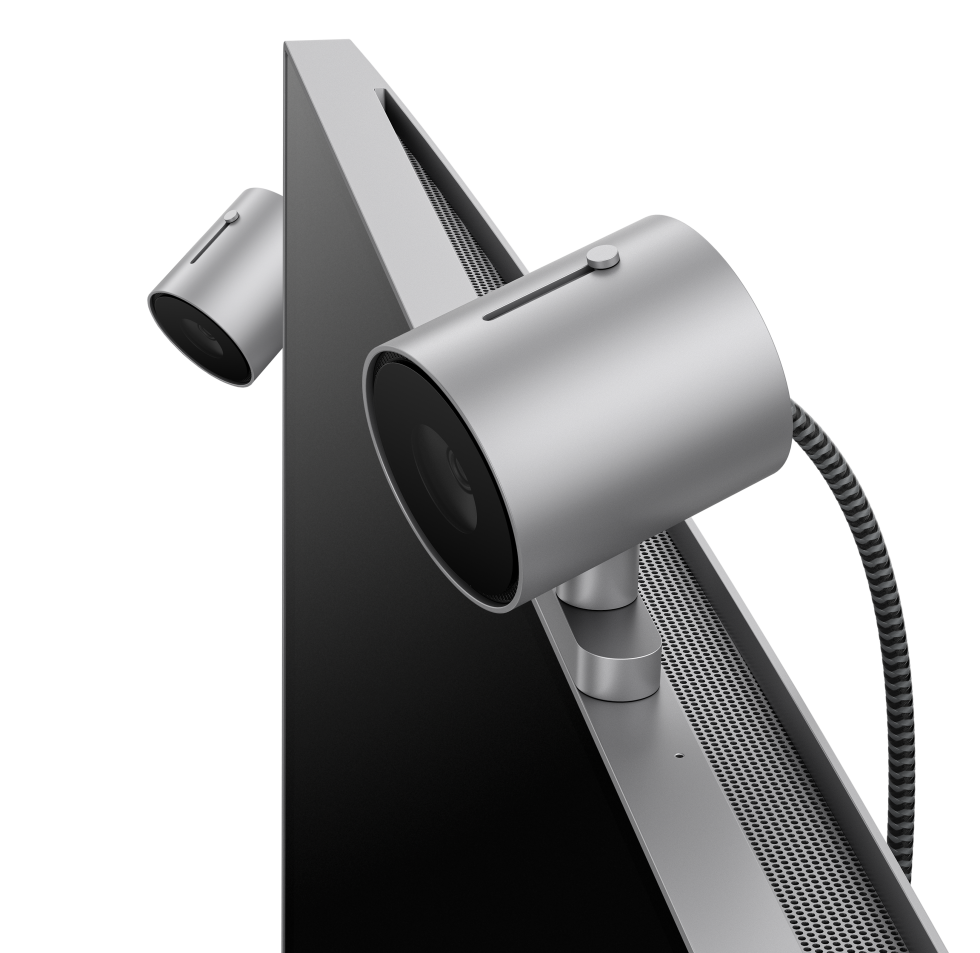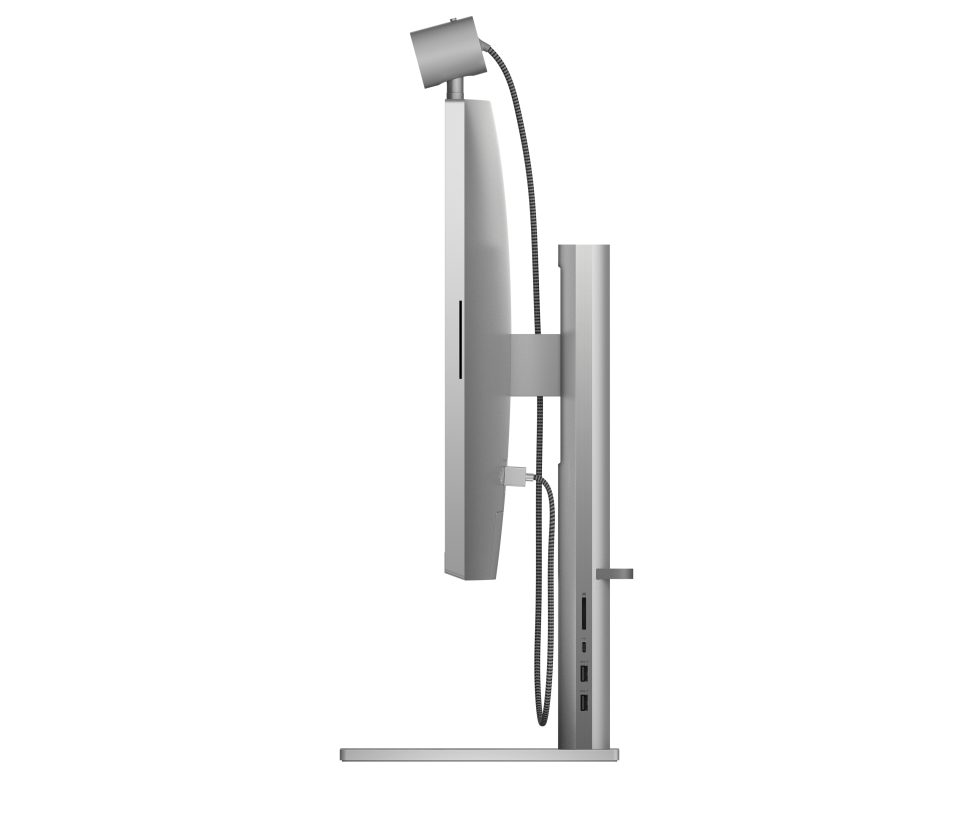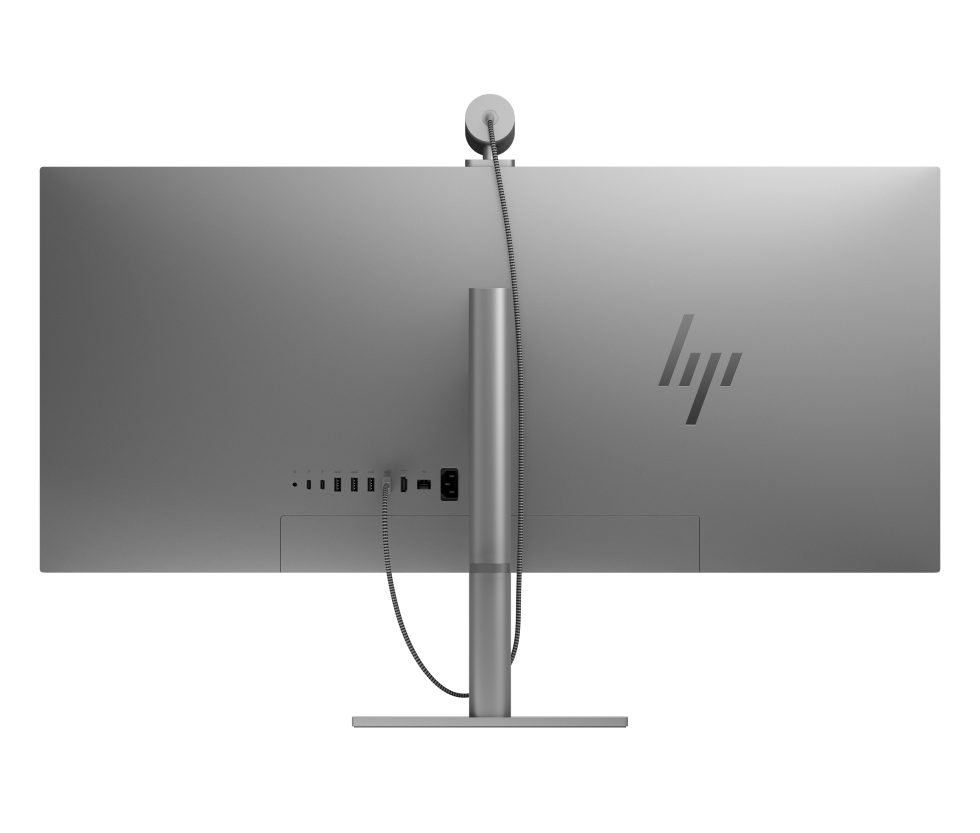
Companies haven't paid all-in-one (AIO) PCs a lot of love lately. Exciting AIO releases in the US are few and far between, and ever since Apple discontinued the 27-inch iMac, there has been somewhat of a gap for users seeking the simplicity of an AIO, along with ultra-high resolution and strong components. HP has apparently noticed that gap because in September, it will release a 34-inch AIO with 5120×2160 resolution, current-generation Intel and Nvidia parts, and flashy features aimed at workers.
Magnetic webcam(s)
A webcam that can magnetically attach to anywhere on the display's bezel is one of the hallmark features of HP's 34-inch all-in-one Desktop PC announced today at HP's Amplify channel partner conference.

This is similar to a magnetic webcam concept Dell showed us in December, but the camera isn't wireless and can't attach directly to the display. The AIO also supports up to two of these magnetic cameras; they would use pixel binning for 4 MP per still or video image, according to HP.
With two cameras, users can videoconference their face while simultaneously showcasing a secondary view, for streaming things like the top of their desk, a product prototype, a real-life document, or a whiteboard. Included software has a feature for cropping the image to center documents and flatten the appearance of paper so they appear more natural in the video. We'd have to try the feature to see if it's helpful, distracting, or even noticeable.
HP jammed the all-in-one's camera with software-based features that, if they're like the implementation in some of HP's latest laptop webcams, you may be able to live without. They include dynamic voice leveling, auto-framing, and lowlight and backlight adjustment. The mics also use AI noise reduction.
Speaking of things we could live without, especially in a work environment, the all-in-one introduces a feature that can change your video feed during a conference call to a freeze-frame of your image with the acronym "BRB" (or "be right back," for those who haven't IMed in a while), written largely on the bottom to let callers know you've stepped away.
While some of the aforementioned features may sound gimmicky, we could see ourselves using its other features daily. There's a base with 15W Qi wireless charging, and the height-adjustable stand has a USB-C port and two USB-A ports (both operating at 5Gbps) that are hopefully easy to access regardless of the display's height.

High resolution, upgradability, and other specs
HP's 34-inch All-in-One Desktop PC may invite Apple Studio Display comparisons, due to its 5K ultra-wide resolution and HP's materials describing the computer as bringing a "studio-like experience" and "studio quality." Aimed at professionals, the AIO has a 21:9 IPS display with lesser pixel density than Apple's 27-inch, 16:9 monitor (163 pixels per inch versus 218 pixels per inch).
But the HP all-in-one has desktop-level parts inside, while the Studio Display monitor only uses a smartphone-grade A13 SoC (for features related to things like the webcam and Hey Siri). HP's PC goes up to an Intel Core i9-12900 with vPro, an Nvidia RTX 3060 (6GB GDDR6X) LHR GPU, 4TB of storage across two NVMe M.2 SSDs, and 128GB of DDR4-4800 RAM. The storage and RAM are supposed to be easily upgradeable or replaceable through a panel that opens on the computer's backside.

Those are steep specs compared to other AIOs available today in a larger size. For example, Lenovo's 27-inch 4K Yoga AIO 7 has an AMD Ryzen 7 5800H, AMD Radeon RX 6600M (8GB), 1TB of storage, and 16GB of DDR4-3200 RAM. Apple's 24-inch iMac has up to an M1 with eight CPU cores and eight GPU cores, 8GB of memory, 512GB of storage, and 4480×2520 pixels.
HP claims the 34-inch Desktop PC's IPS panel can hit 500 nits of brightness and cover 98 percent of DCI-P3. For comparison, we recorded 98.9 percent DCI-P3 and 589 nits in our Studio Display review, and Lenovo's Yoga AIO 7 claims 360 nits and 99 percent DCI-P3.
The port selection continues on the backside with a pair of Thunderbolt 4 ports, four USB-A ports (10Gbps), HDMI 2.1, RJ45, and a 3.5 mm jack.
For those craving an all-in-one with a little more size, pixels, and power (and maybe a gimmick or two), the 34-inch HP All-in-One Desktop PC will start at $2,119 and will include an i5-12500 and RTX 3050 (4GB) LHR GPU.
Ars Technica may earn compensation for sales from links on this post through affiliate programs.
Listing image by HP
reader comments
50